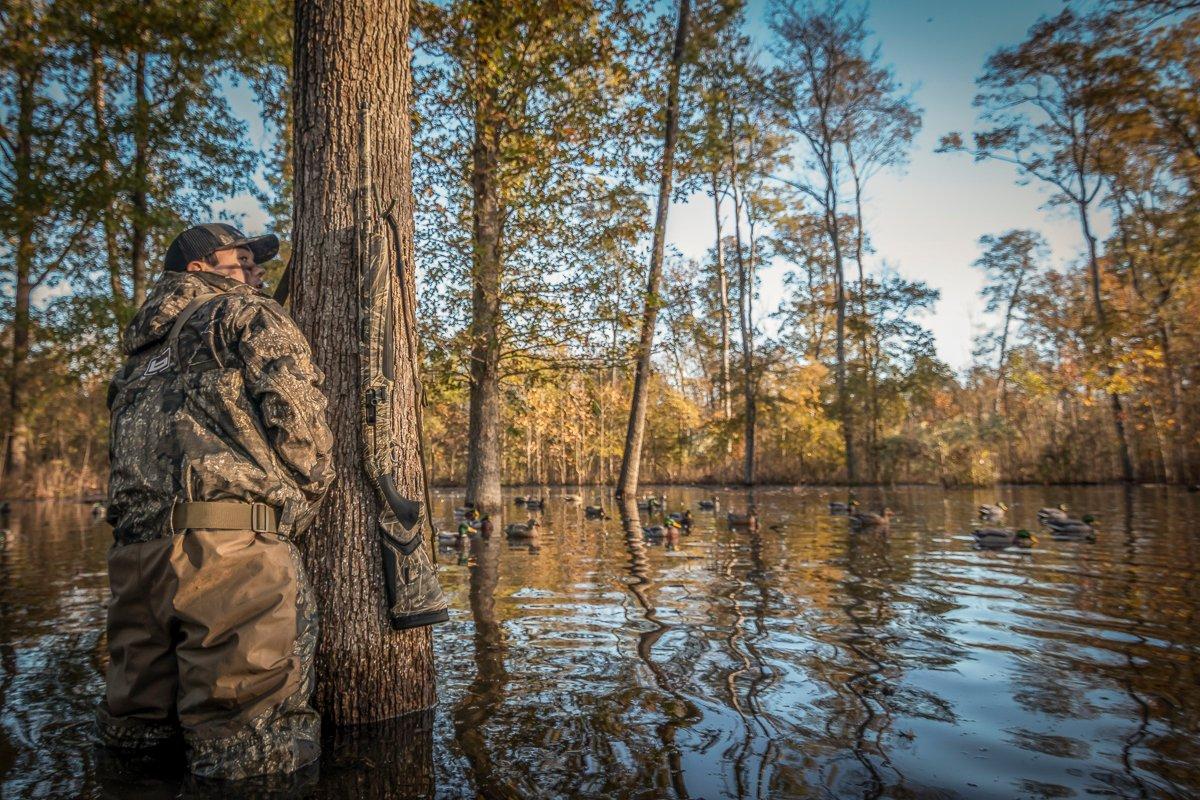When the action is stale, pulling your spread and moving is the best bet, right? Not always
Most duck hunters love being mobile. If we can use aggressive moves and critical thinking to get on the X, we usually will. But sometimes, sticking with a setup can be the best decision, even if it doesn't pay dividends immediately. Let's examine four scenarios when staying put can trump switching spots.
1. Along Consistent Traffic Routes
Depending on conditions, ducks and geese can fall into fairly regular travel patterns. Teal often follow waterways, wood ducks commonly fly tight to tree-lined streams or channels, and buffleheads and goldeneyes frequently skirt shoreline points during offshore winds. The list of consistent traffic areas is endless. So if you can't set up at a hot feeding area, plunking down for the long haul at a waterfowl highway is a great play. You probably won't experience fast and furious action like you would at the X, but you'll at least be in the flight path of traveling birds throughout a morning or evening. Good calling, smart spreads and lots of patience can turn these attrition hunts into memorable days.
2. Around Loafing Areas
Every waterfowler knows about roosts, feeding areas and travel routes to and from those spots. But many forget that ducks and geese spend much of the day loafing. Geese often leave feeding areas by midmorning and loaf midday on smaller waters. Mallards and woodies find small sloughs and creeks where they can stay secluded. Divers might mass on open water, preening and bobbing in the waves. Often, loafing areas see little activity at daylight and dusk, when birds feed or travel to and from roosting spots.
Find these spots and make a day of it. Slip in at first light, set a small spread to let birds know some friends are there, and wait in ambush as ducks or geese trickle in from hot feeds. Again, you might not enjoy barrel-melting action, but you'll often get in-your-face shots as content birds drop into what they believe is a safe zone.
3. In Building Winds
Big-water hunters know this scenario: The weatherman called for brisk winds, but the lake looks like a mirror at first light. After a fruitless hour or so, many guys quit. That's often the mistake. Unless a major front arrives overnight, wind usually increases throughout the morning, turning calm waters into white-capping cauldrons by 10 or 11 a.m. And as winds build, ducks move, seeking calmer waters.
Use weather apps to study the hourly forecast. If the weather gurus say the wind will increase by 10 or 12 mph by midmorning, it's probably worth sticking around to see how ducks will respond. If the forecast falls through, you can move. But if it's accurate, you might see consistent activity as birds seek lee shorelines or flee larger water for smaller, calmer spots.
4. When Pressure Wanes
We've all hunted high-pressure spots where there seems to be a spotlight in every bay and a hail call emanating from every cattail patch. Funny how those shouts typically fade as the morning drags on.
Midday can be a great time to hunt popular spots simply because other hunters quit, leaving birds relatively unmolested. Sticking tight long after other guys leave often puts extra ducks in your boat. Sure, these hunts are exhausting, and staying on the water all day doesn't guarantee success. But leaving to rake leaves or take a nap certainly guarantees failure.
Click here for more Realtree waterfowl hunting content. And check us out on Facebook.








